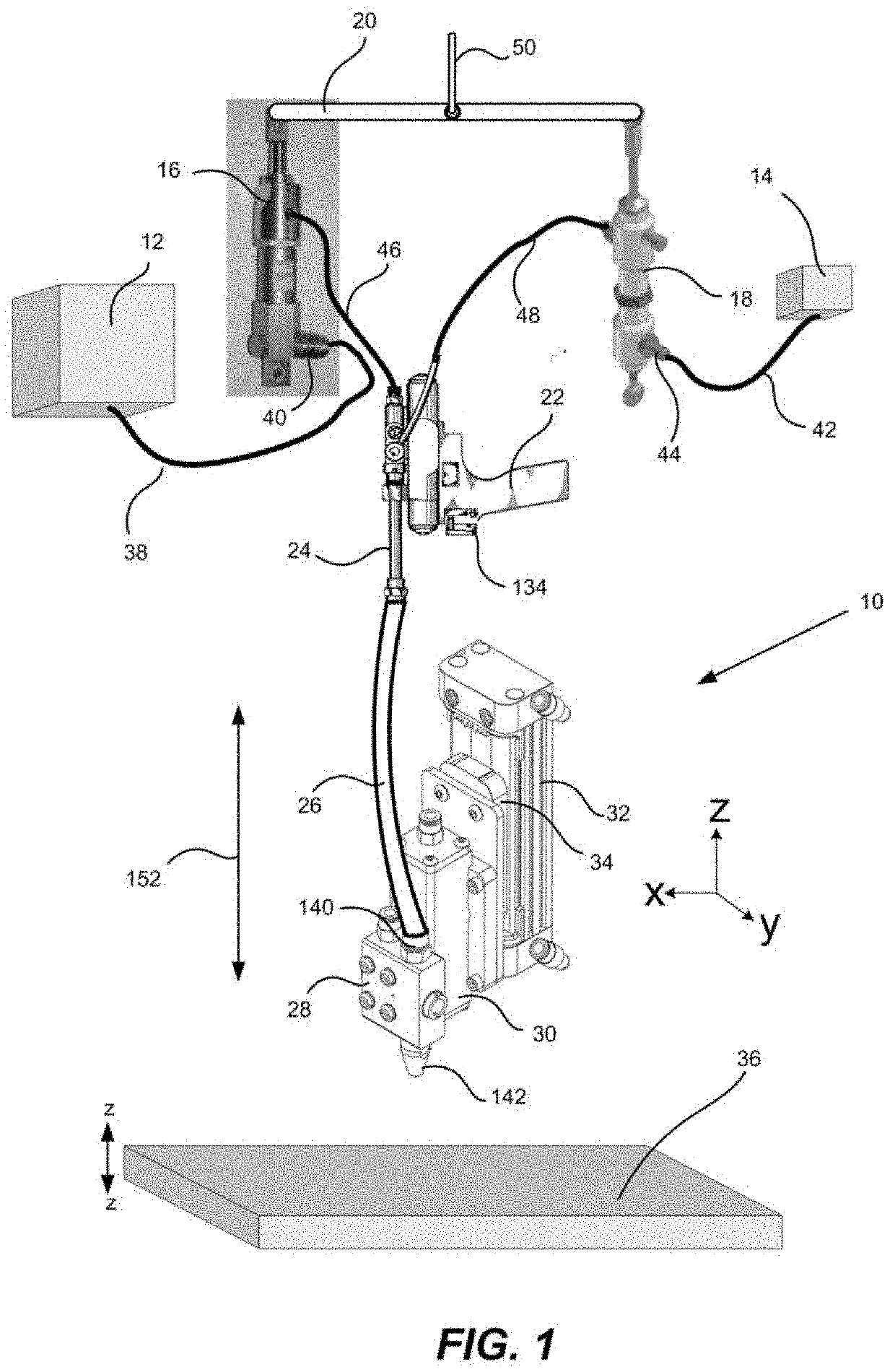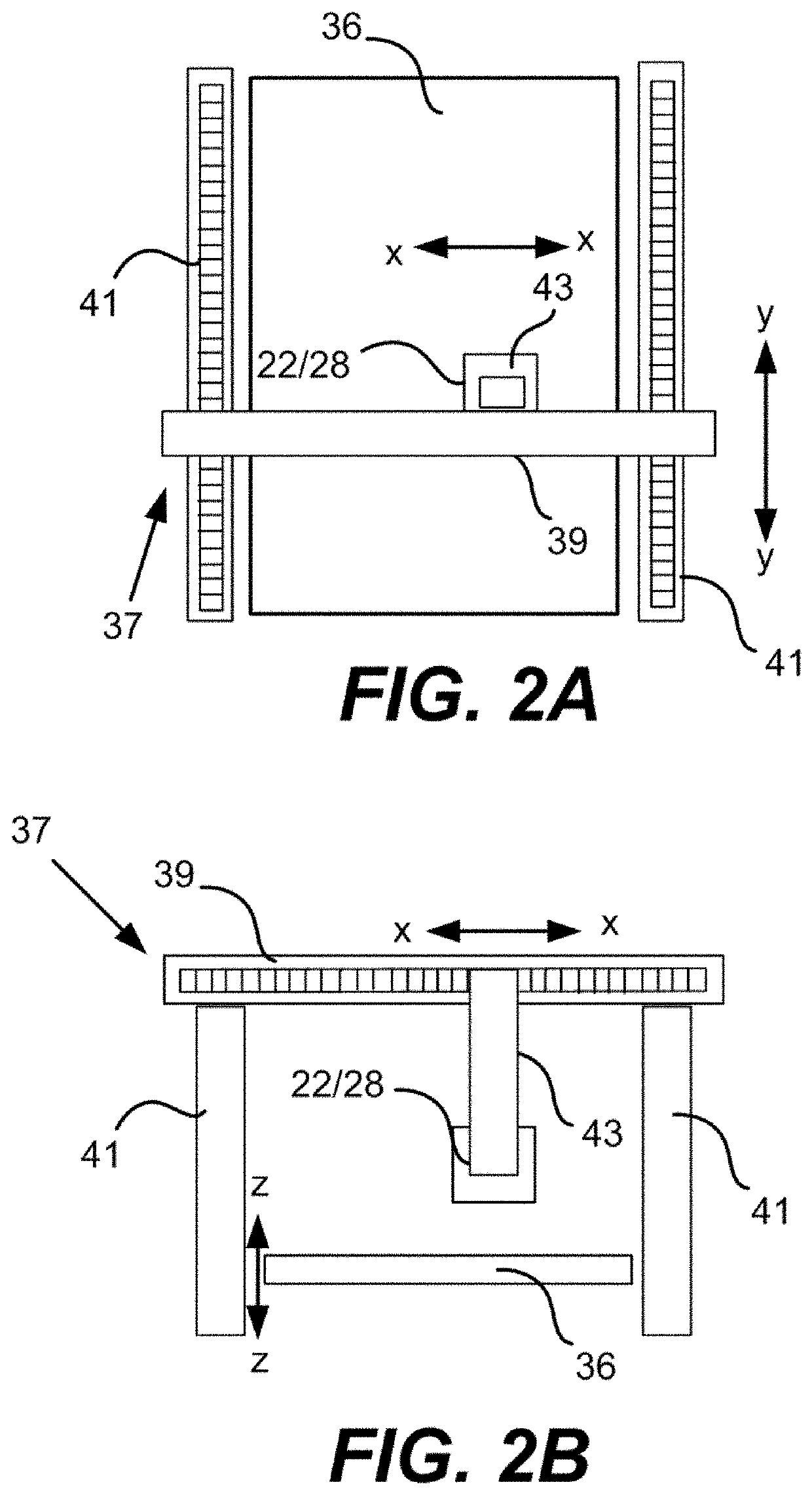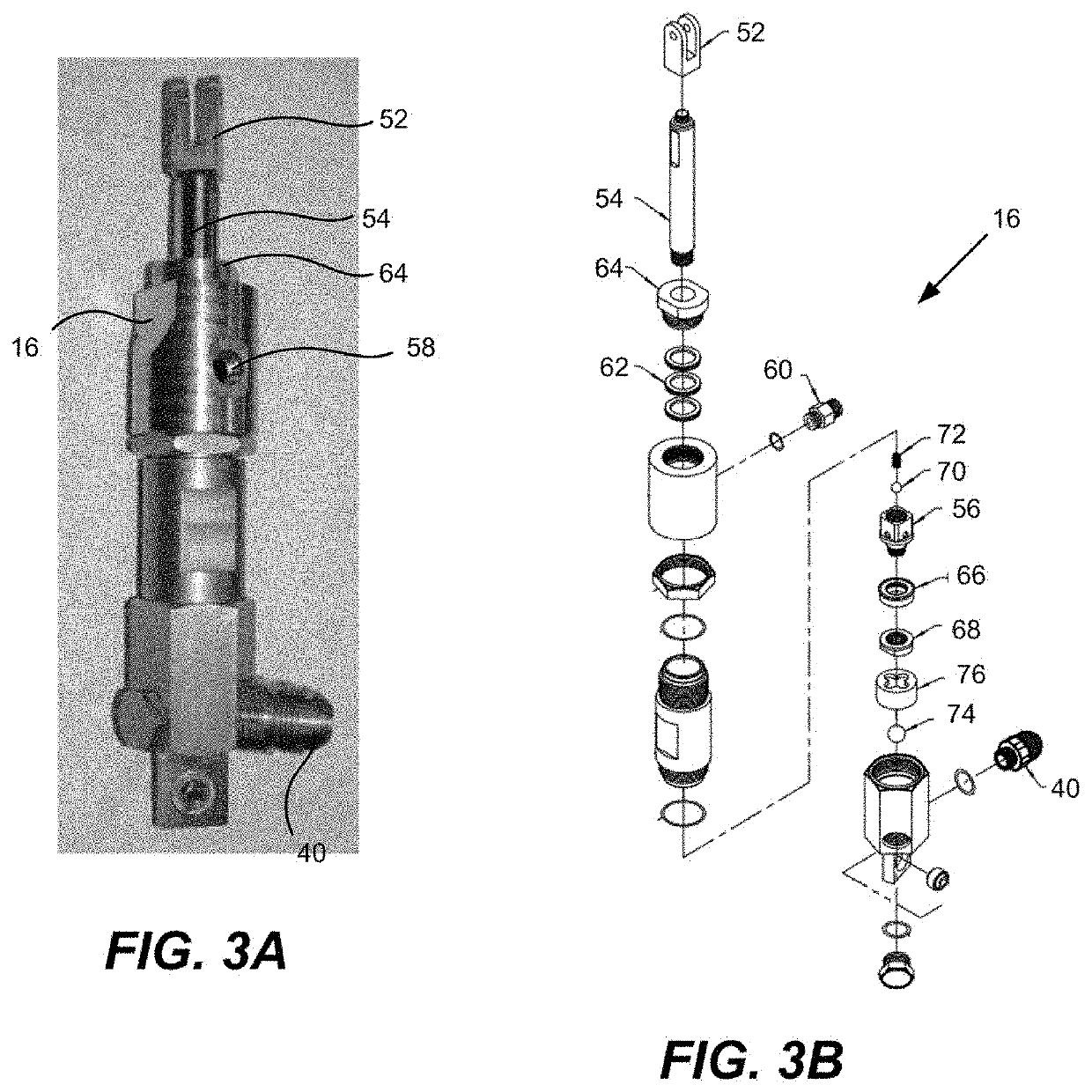Pumping system and method for 3D printing
a printing system and 3d printing technology, applied in the direction of additive manufacturing processes, manufacturing tools, applying layer means, etc., can solve the problems of difficult, if not impossible, to use the conventional dispensing system used for epoxy and urethane thermoset resins, and achieve easy dispensing and mixing, suitable results, and varying viscosity
- Summary
- Abstract
- Description
- Claims
- Application Information
AI Technical Summary
Benefits of technology
Problems solved by technology
Method used
Image
Examples
Embodiment Construction
[0024]With reference to FIG. 1, there is shown an overall illustration of the three-dimensional (3D) printing system 10 according to the disclosure. The main components of the system 10 include a resin supply 12, a catalyst supply 14, a resin pump 16, a catalyst pump 18, pump linkage 20, a dispense gun 22, a mixer 24 attached to the dispense gun, a flexible hose 26 from the dispense gun 22 to a rotary dispense valve 28, an actuator 30 for the rotary dispense valve 28, a rodless slide 32, a slide plate 34 for the rotary slide actuator 30 on the rodless slide 32 and a movable table 36 for supporting and moving a substrate in a z direction for deposition of a 3D object thereon from the 3D system 10.
[0025]The dispense gun 22 and rotary dispense valve 28 are mounted on a gantry 37 as illustrated schematically in FIGS. 2A and 2B. The gantry 37 includes a movable top rail 39 that moves in an y direction along rails 41 and a support arm 43 for the dispense gun 22 and rotary dispense valve 2...
PUM
| Property | Measurement | Unit |
|---|---|---|
| volume ratio | aaaaa | aaaaa |
| volume ratio | aaaaa | aaaaa |
| volume ratio | aaaaa | aaaaa |
Abstract
Description
Claims
Application Information
 Login to View More
Login to View More - R&D
- Intellectual Property
- Life Sciences
- Materials
- Tech Scout
- Unparalleled Data Quality
- Higher Quality Content
- 60% Fewer Hallucinations
Browse by: Latest US Patents, China's latest patents, Technical Efficacy Thesaurus, Application Domain, Technology Topic, Popular Technical Reports.
© 2025 PatSnap. All rights reserved.Legal|Privacy policy|Modern Slavery Act Transparency Statement|Sitemap|About US| Contact US: help@patsnap.com



